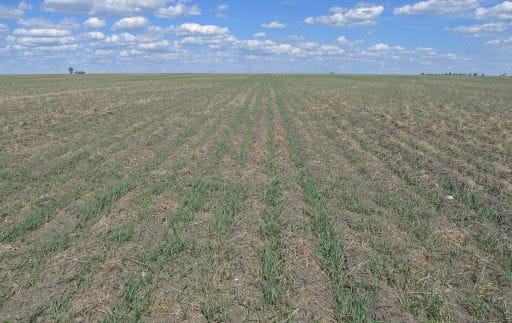Released on June 13, 2019
Many areas of the province that are in need of rain did not receive any this past week. However, localized rain helped to relieve dry topsoil moisture conditions in the northwest and southeast. The moisture will help with crop germination and growth, while encouraging hay land and pasture growth.
Across the province, seeding operations are mostly complete, but there are a few fields being seeded for green feed and silage. Germination is patchy and crop growth is slow in some regions due to the dry conditions but the recent rain has helped where it was received.
Parts of the southeastern region reported large amounts of rain this past week. The Weyburn area recorded up to 69 mm and the Broadview area 25 mm. In the northwest, areas around Lloydminster received 40 mm. However, areas around Gravelbourg, Kyle, Leader, Bethune, Craik, Outlook and Kindersley remain very dry, having received less than 25 mm of rain since April 1.

Topsoil moisture conditions improved where rain was received, but continue to deteriorate across the province due to the strong winds and lack of moisture. Cropland topsoil moisture is rated as 21 per cent adequate, 42 per cent short and 37 per cent very short. Topsoil moisture on hay land and pasture is rated as 17 per cent adequate, 32 per cent short and 51 per cent very short.
Crop growth is delayed in much of the province, and most crops are behind their normal developmental stages for this time of year, due to lack of moisture. Thirty-seven per cent of fall cereals are reported being in the shotblade stage and 28 per cent are heading, while 43 per cent of the spring cereals are tillering. Thirty per cent of canola is emerging and 37 per cent is in the seedling stage, along with 34 per cent of the flax. Ninety-five per cent of the pulse crops are emerging and in the vegetative growth stage.
The majority of crop damage this past week was due to frost, strong winds, insects such as flea beetles, cutworms, grasshoppers, wireworms and a lack of moisture.
Farmers are busy controlling pests and hauling grain.
A complete, printable version of the Crop Report is available online at www.saskatchewan.ca/crop-report.
Follow the 2019 Crop Report on Twitter at @SKAgriculture.
-30-
For more information, contact:
Cory Jacob
Agriculture
Moose Jaw
Phone: 306-694-3587
Email: cory.jacob@gov.sk.ca

